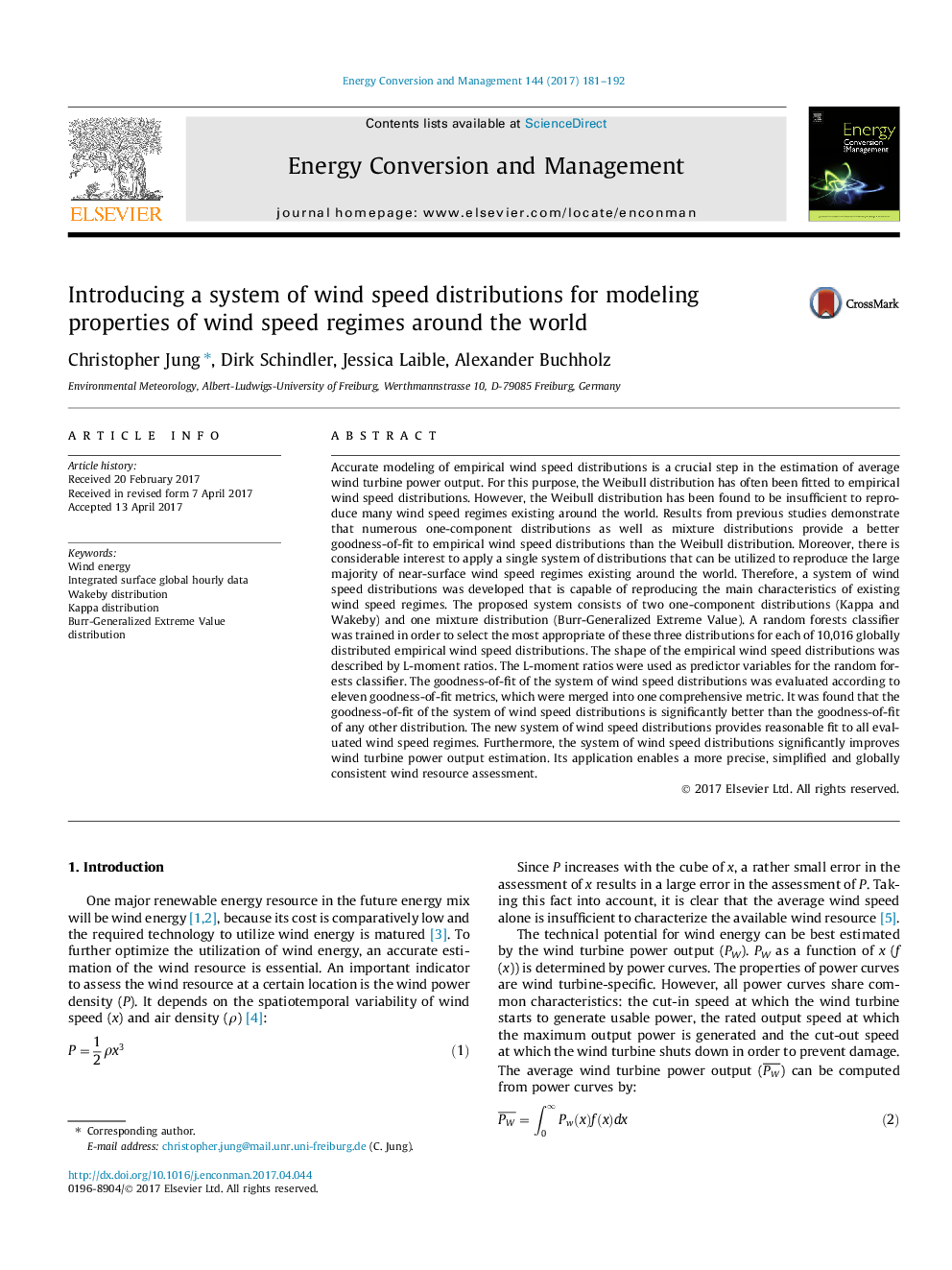| Article ID | Journal | Published Year | Pages | File Type |
|---|---|---|---|---|
| 5012648 | Energy Conversion and Management | 2017 | 12 Pages |
Abstract
Accurate modeling of empirical wind speed distributions is a crucial step in the estimation of average wind turbine power output. For this purpose, the Weibull distribution has often been fitted to empirical wind speed distributions. However, the Weibull distribution has been found to be insufficient to reproduce many wind speed regimes existing around the world. Results from previous studies demonstrate that numerous one-component distributions as well as mixture distributions provide a better goodness-of-fit to empirical wind speed distributions than the Weibull distribution. Moreover, there is considerable interest to apply a single system of distributions that can be utilized to reproduce the large majority of near-surface wind speed regimes existing around the world. Therefore, a system of wind speed distributions was developed that is capable of reproducing the main characteristics of existing wind speed regimes. The proposed system consists of two one-component distributions (Kappa and Wakeby) and one mixture distribution (Burr-Generalized Extreme Value). A random forests classifier was trained in order to select the most appropriate of these three distributions for each of 10,016 globally distributed empirical wind speed distributions. The shape of the empirical wind speed distributions was described by L-moment ratios. The L-moment ratios were used as predictor variables for the random forests classifier. The goodness-of-fit of the system of wind speed distributions was evaluated according to eleven goodness-of-fit metrics, which were merged into one comprehensive metric. It was found that the goodness-of-fit of the system of wind speed distributions is significantly better than the goodness-of-fit of any other distribution. The new system of wind speed distributions provides reasonable fit to all evaluated wind speed regimes. Furthermore, the system of wind speed distributions significantly improves wind turbine power output estimation. Its application enables a more precise, simplified and globally consistent wind resource assessment.
Keywords
Related Topics
Physical Sciences and Engineering
Energy
Energy (General)
Authors
Christopher Jung, Dirk Schindler, Jessica Laible, Alexander Buchholz,
